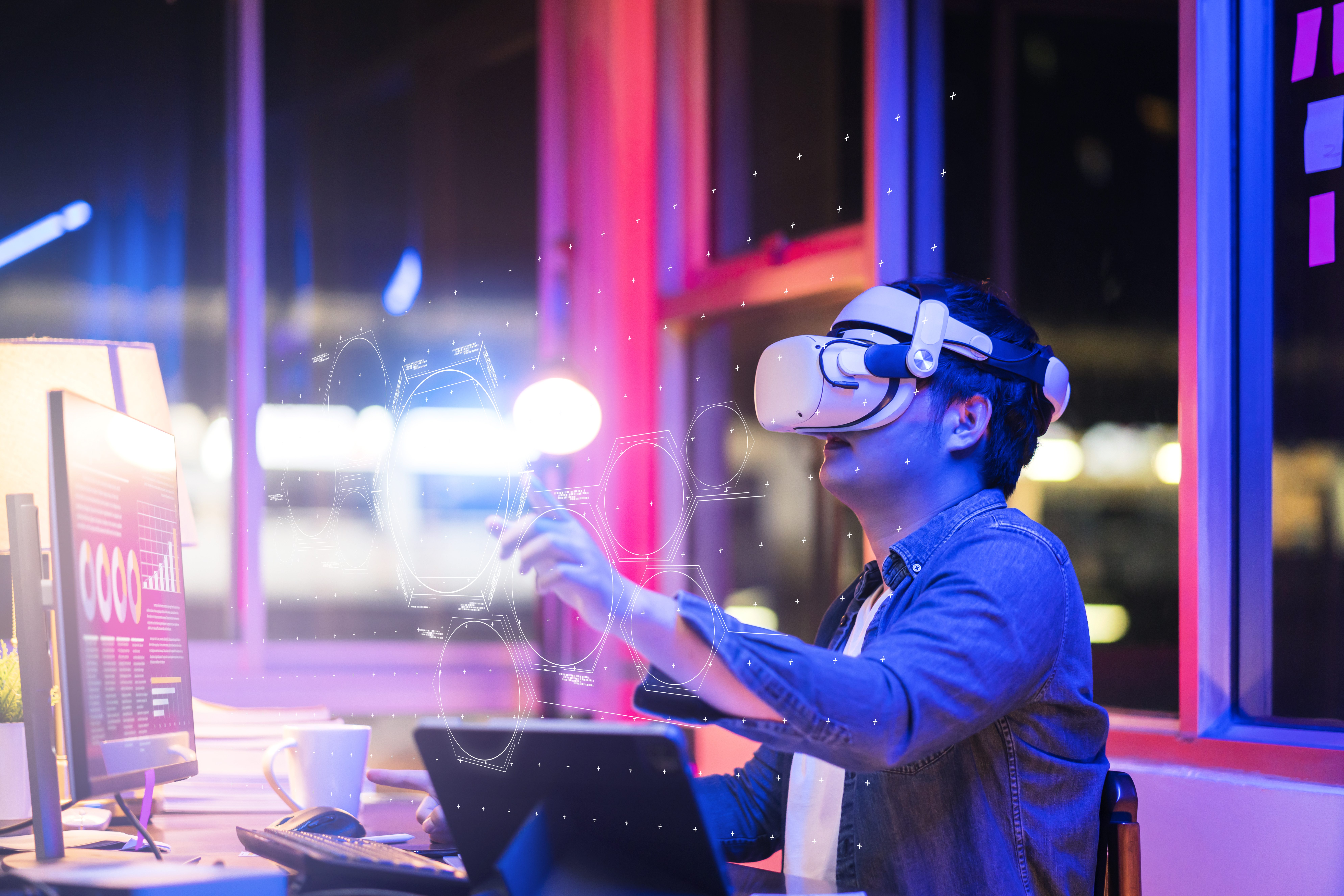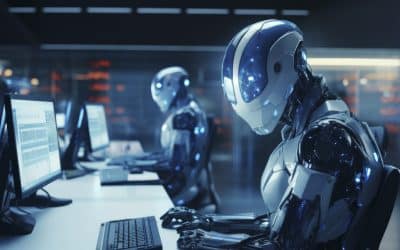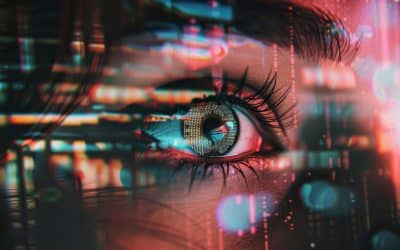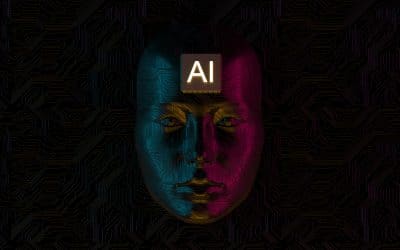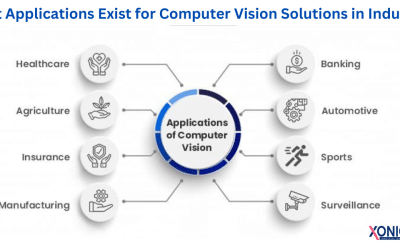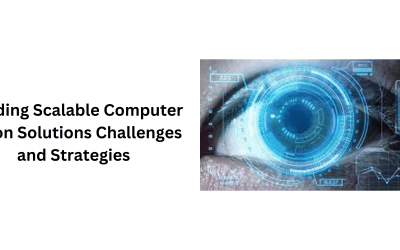At its core, object detection refers to identifying specific classes of objects, such as people, vehicles, and animals. Object Localization takes it one step further by pinpointing their precise positions within an image using combined bounding box coordinates. It allows computer vision systems to identify which objects are visible and their exact placement within scenes.
Object localization has transformed computer vision. Accurately pinpointing images and objects has significantly enhanced applications like autonomous vehicles and facial recognition. With today’s cutting-edge tech, there’s even more significant potential for transformation!
Understanding Object Localization
A key element of computer vision, object localization, is an essential process that involves identifying and placing specific items within digital images or videos. It serves as the cornerstone for various applications, including deep learning and data enhancement, allowing systems to detect images accurately while accurately interpreting their contents.
CNN-based localizers contribute to computer vision software, particularly object localization. Their influence is making accurate object location possible through regression analysis, which identifies bounding box coordinates relevant to contemporary computer vision systems.
Accuracy and speed are vital to the widespread usage of object detection systems, making object localization one of the fastest-expanding fields within machine learning. Improved accuracy and speed allow systems to recognize objects more efficiently by augmenting classification algorithms’ capability and finding objects faster than before.
Feature extraction techniques may extract unique characteristics of localized objects to ensure accurate Localization. Such attributes could include shapes, textures, colors, or any other distinguishable attribute that aids in precise detection. Post-processing procedures, including NMS or Bounding Box Refinement, serve to remove duplicate or redundant bounding box predictions so only pertinent and exact localization data remains.
Measures such as Intersection Over Union (IoU) and Mean Average Precision (mAP) can help evaluate model models that target objects by measuring their efficiency in targeting objects while providing quantitative indicators of robustness and accuracy. By integrating all these elements, object localization algorithms allow devices to recognize and precisely locate contextualized objects within complex visual environments. It also allows a wide array of uses outside of computer vision alone.
Essential Components Of Object Localization
The critical aspects of Localization include many vital phases, each aiding in the correct and secure Localization of objects.
Object Detection
Object localization usually begins with object detection, where Deep Learning Models or algorithms can detect the potential Object in the image. Various techniques, including regional-based CNNs, Faster R-CNN, or YOLO (You Only Have One Look), can be used to find and identify locations likely to be populated by objects.
Bounding Box Regression
Once the Object has been identified, the next step is accurately locating it using bounding boxes that encapsulate the identified Object. The process typically involves regression models, which predict the coordinates of bounding box edges about the image’s coordinate system.
Semantic Or Instance Segmentation
Advanced localization techniques surpass the basic bounding box by using semantic or in-instance segmentation to define areas of an object on the pixel level accurately. Semantic segmentation assigns every pixel within an image to a specific class type, while instance segmentation distinguishes between distinct objects.
Feature Extraction
Feature extraction plays a vital part in capturing distinguishable characteristics of localized objects. These features may include the appearance of shapes, textures, and other distinct attributes that permit precise and accurate recognition of objects in the scene.
Post-processing Techniques
Post-processing is essential to refining the localization results and eliminating duplicate or overlapping bounding box predictions. Methods like Non-Maximum Suppression (NMS) and bounding box refinement can help eliminate untrue predictions and ensure that only the most precise localization results are preserved.
Evaluation Metrics
Models for object localization are assessed using metrics like Intersection over Union (IoU) and Mean Average Precision (mAP), which give quantitative indicators of the quality and reliability of the localization process.
Essential Elements Of Object Localization
Using these mathematical theories and techniques, object location algorithms allow you to locate objects precisely within images. They also allow for various uses in the field of computer vision. A few of the most fundamental elements that are involved in object localization are:
Convolutional Neural Networks (CNNs)
CNNs constitute the foundation of various object-location techniques. They use mathematical techniques like convolutions, pooling activation, and convolution functions to identify photograph features and patterns in images.
Regression Analysis
The Localization of objects often requires regression analysis to determine the location of bounding boxes surrounding them. This is done using methods like linear regression and more sophisticated techniques like deep-learning-based regression models.
Intersection Of Union (IOU)
IoU is an essential measurement used to determine the quality of object localization. It determines the degree of disproportion between predicted bounding boxes and ground-truth bounding boxes. This indicates the degree to which the predicted bounding box corresponds to the exact position of the item.
Loss Functions
Loss-related functions, such as MSE, also known as (MSE) or smooth loss (L1), are used to determine the gap between bounding boxes and the actual ground reality. They help optimize model parameters during training and encourage the network to provide exact and accurate localization results.
Gradient Descent And Backpropagation
Optimization techniques are vital to training deep-learning models for object localization. They involve iteratively changing the model’s parameters to reduce the loss function and thereby increase the accuracy of location predictions.
Non-Maximum Suppression (NMS)
The NMS technique eliminates duplicate or overlapping bounding box predictions. It is based on choosing the bounding box with the best certainty score while eliminating the other overlapping boxes that could represent similar objects.
Matrix Operations And Linear Algebra
Many of the calculations involved with object location, including convolution, pooling, or matrix multiplication, are based upon the principles of linear algebra. Understanding these fundamentals is vital in implementing effective methods for locating objects.
How Do You Do Object Localization For Computer Vision?
Various techniques could be used for Implementing Object Localization In Computer Vision, including object detection and tracking algorithms. The algorithms for object detection are developed to locate and identify objects within videos or images. They are built upon techniques like feature extraction or classification. These algorithms are created to track the motion of an object through time. They can also be built on methods that include Kalman and particle filters.
Background clutter, occlusion, and the variability of objects are several issues when it comes to the Localization of objects. Occlusion is when the visible portion of an object gets obscured by an object, making it hard to identify an object accurately. If other objects or elements in an image make it challenging to pinpoint the Object, it is often known as background obstruction. The expression “variability in object appearance” is the term used to describe how the same Object may appear differently in different images or movies based on lighting conditions, position, and perspective.
Ultimately, object location is a crucial aspect of computer vision and can be mainly utilized in applications. It involves finding the exact location of an object within a video or image, allowing computers to comprehend and recognize the contents of an image or video.
Real-World Applications Of Object Localization
Localization of objects plays a vital role in everyday life and various technologies, from mobile phones to autonomous cars.
Object Localization In Everyday Life
Location-based objects are everywhere, from the ease of using smartphone apps to the security capabilities integrated into autonomous vehicles. For smartphones, this tech allows for augmented reality and accurate camera focusing by finding and locating objects in videos or photos. In self-driving cars, object location helps identify motorists, pedestrians, and other obstacles in real-time to maintain safe navigation and collision prevention.
From Smartphones To Autonomous Vehicles
Its seamless incorporation of Localization on smartphones improves the user experience by introducing innovative apps such as object recognition for photography and interactive gaming. However, this technology permits accurate identification and positioning of objects inside complicated visual environments for autonomous vehicles. It also facilitates essential functions such as automated emergency braking and an adaptive cruise controller.
Security And Surveillance
Object detection works with cameras and surveillance, which provide safety and security within airports, banks, and railway networks. It identifies suspicious actions of intruders or objects that are not authorized and helps secure public areas and industrial facilities.
Retail Markets And Manufacturing Units
Object detection within image processing concentrates on inventory management and recognizes products using barcode scanners and scanners in retail shops. It can help identify warehouse stock levels and lost items and determine an item’s initial price.
Automation In Factories And Manufacturing Units
Object detection helps find defects, determine the position of products, and sort objects. It also helps identify damaged parts in industrial equipment and improve product consistency.
Challenges And Limitations Of Object Localization
Localization in computer vision can be an intricate and laborious task that presents numerous difficulties, compromising its precision and effectiveness.
Variability In Object Appearance
The objects may appear in different sizes, shapes, colors, orientations, and shapes, making it difficult for computer algorithms to recognize and locate them in various situations.
Scale And Perspective Changes
Images or video frames show objects in various dimensions and perspectives. When their dimensions change dramatically, it can be challenging to locate them accurately.
Occlusion
The Object could be entirely or partially obscured by objects or background elements, resulting in inaccurate or incomplete localization outcomes. This is mainly when complex scenes involve several objects interacting with or overlapping.
Ambiguity In Context
Particular objects could have unclear aspects or blend in with the background, confusing the localization process, mainly when distinctive features aren’t easily visible.
Limited Data And Annotation
Annotating data for localizing objects requires time and resources, taking up valuable time and space on hard drives. Lack of or insufficient data for training can lead to underfitting or poor generalization, which can affect the overall efficiency of the model for Localization.
Real-Time Constraints
Numerous applications require real-time object localization. This requires fast and practical algorithms that meet the demands of time. Finding a balance between precision and time presents a considerable challenge to creating an efficient localization system.
Complex Backgrounds And Clutter
Images could contain complex backgrounds, clutter, or other noises hindering objects’ precise recognition and location, resulting in false positives or negatives.
Adaptability To Diverse Environments
It is essential to ensure that the models used for object localization can be adapted to various light conditions, environments, and camera angles to provide robust performance across multiple environments.
Advanced Object Localization Trends 2024
The ever-changing landscape of object localization within computer vision will see significant technological advancements in 2024. The most innovative trends are expected to transform the field.
Attention Mechanisms And Transformers
The inclusion of these mechanisms, as well as transformers in model models for object location, will increase momentum. The mechanisms will enhance the models’ capacity to focus on an image’s relevant areas, allowing for greater accuracy and flexibility in more challenging photos.
Graph Neural Networks (GNNs)
GNNs can be essential in the multi-object localization task. By modeling the relations between objects and their surroundings, GNNs enable more accurate and contextually aware object localization in messy environments.
Continuous Learning With Few-Shot Adaptation
Object localization models often integrate continuous learning strategies, emphasizing adaptation using a few shots. This allows for the easy addition of new object classes to existing models, essential for developing fluid environments.
Privacy-Preserving Object Detection
Increased privacy issues could lead to developing methods for preserving privacy in object localization. Edge-Optimized Localization of Objects: Edge computing will be essential to applications that run in real time. Object localization models are optimized for edge devices to make them more responsive and efficient in IoT drones, IoT, and robotics-related scenarios. The multimodal approach can improve the precision of Localization, specifically when using autonomous vehicles and multi-sensory robotics.
Quantum Computing For Object Localization
The emerging field of quantum computing is being studied for its capacity for solving complex optimization challenges with object localization that are exponentially more efficient and open new horizons for precision and speed.
Ethical AI Governance
Legal and ethical issues will drive the creation of AI management frameworks that specifically address object location. Conformity with these frameworks will be the top priority to ensure an ethical AI application in various fields.
Hyper-Personalized Object Localization
Custom object localization models tailored to specific industries or domains can gain ground. The models can be adapted to particular environmental circumstances, producing unbeatable precision.
These technological developments are expected to revolutionize the possibilities of Computer Vision. They promise higher accuracy, adaptability, and moral accountability in a more complicated and sensitive world.
Combining Object Detection, Tracking, And Localization
When objects have been identified and tracked, the next step is to find their location in the world. This is referred to as localizing objects. To locate objects accurately, it’s necessary to integrate information from object detection and tracking.
An alternative method to integrate object detection and tracking is a Kalman filter. The Kalman filter is a mathematical instrument that estimates an object’s position by analyzing its previous position and speed. Combining information from object tracking and detection and tracking, a Kalman filter will estimate an object’s location.
A further important element of real-time tracking objects, as well as Localization, is data connection. Data association is the process of finding out which detections within an image correspond to what objects. It can be challenging since objects may shift quickly and change appearance as they move—many data connection methods, including Hungarian or greedy algorithms, and more sophisticated methods such as DeepSORT.
Creating a live-time process for tracking and localizing objects involves combining object detection with tracking and Localization. Techniques like data association and Kalman filtering enhance the quality and reliability of the process.
Conclusion
Object localization is the fundamental element of computer vision in modern times, allowing for various applications in all industries. The real-time Localization and tracking of objects are increasing, and they have many significant applications in areas like autonomous cars, surveillance, and Augmented Reality.
It has become more efficient and accurate thanks to deep processing and advanced computer vision methods. However, several issues remain, including occlusions, variations in lighting conditions, and varying objects’ appearance. Future research might focus on developing advanced methods for detecting objects, tracking, and Localization and making the most efficient and reliable of current methods.
Despite the challenges, constant advances in deep learning and data augmentation have led to greater accuracy and adaptability of models for Localization. These advances promise the future of machines that can perceive and interact with the environment with incredible accuracy.
Frequently Asked Questions
What is object localization in computer vision?
What are the components of object localization?
The components of object localization are object detection, bounding box regression, semantic or instance segmentation, feature extraction, post-processing techniques, and measurement methods like IoU and mAP. It also involves the use of Convolutional Neural Networks (CNNs), Non-Maximum Suppression (NMS), and matrix operations based on linear algebra.
How is object localization done in computer vision?
Object localization is achieved by leveraging deep learning models in object detection and tracking algorithms. These algorithms locate and identify objects within images or videos, effectively tracking their motion over time and dealing with challenges like cluttered backgrounds, object occlusion, and variability in object appearance.
What are some real-world applications of object localization?
Your Title Goes HereWhat are the limitations of object localization?
Object localization faces challenges like object variability, scale and perspective changes, occlusion, context ambiguity, limited data and annotation, real-time constraints, complex backgrounds, and adaptability to diverse environments.

